

5 Quick Things: July 2024
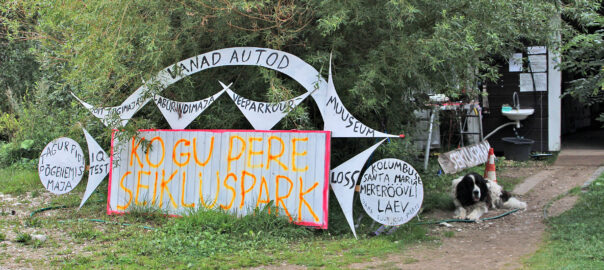
Adventure Park [Seikluspark], Hiiumaa
About an hour outside of Zürich, Switzerland, you can visit an “art park” called the Bruno Weber Park. Art park doesn’t really sum up what Bruno Weber Park is but the only important point is that I saw it on some travel page when I was planning out my vacation in Switzerland. It has a link and a website and information on the internet (this sounds nonsensical but I promise I’m going somewhere). When you visit you’ll likely join a small gaggle of humans all gawking to see the same thing, there were over 50 people at the park the day I was there. There are signs by the train station telling you where it is and how to get there and when you appear at the gate they’ll hand you a neat little printed brochure that has all the art objects labeled. Signs dot the park telling you the back stories and materials of all of the objects. The creator of the park even has an English language Wikipedia page for you to browse should you desire more information.
The park, while whimsical and strange, is full of stable and sturdy art pieces made of various materials created by a man who dedicated himself and his students to making beautiful objects for people to enjoy. The main artist, having trained in multiple countries, multiple disciplines, and under many famous artists over the years has left behind surrealist pieces that inspire and transform our ideas of the world to the extent that he was even commemorated by the Swiss government and has had his work displayed and commissioned in other areas in Switzerland.
“Seikluspark” is not Bruno Weber Park. For one, Seikuluspark doesn’t actually really have a name. It’s simply listed on English Google Maps as “Wooden copy of the Eiffel Tower” (or “Eiffeli torn ja seikluspark” in Estonian). It is, for all legal purposes, some guy’s yard. It’s located on the already fairly remote Estonian island of Hiiumaa and built completely by hand by one man, Jaan Alliksoo. I searched top to bottom every Hiiumaa tourism page but couldn’t find any mention of it. It’s not that the island is jammed to gills with excitement so it would be simply too much to include, but instead it’s so unauthorized as to not make this list of the amazing attractions on this island. This attraction is somehow less valid than a field of loose sand. I’m sure the sand has an ecological reason for being notable but this is not apparent from the tourism page where it’s listed.
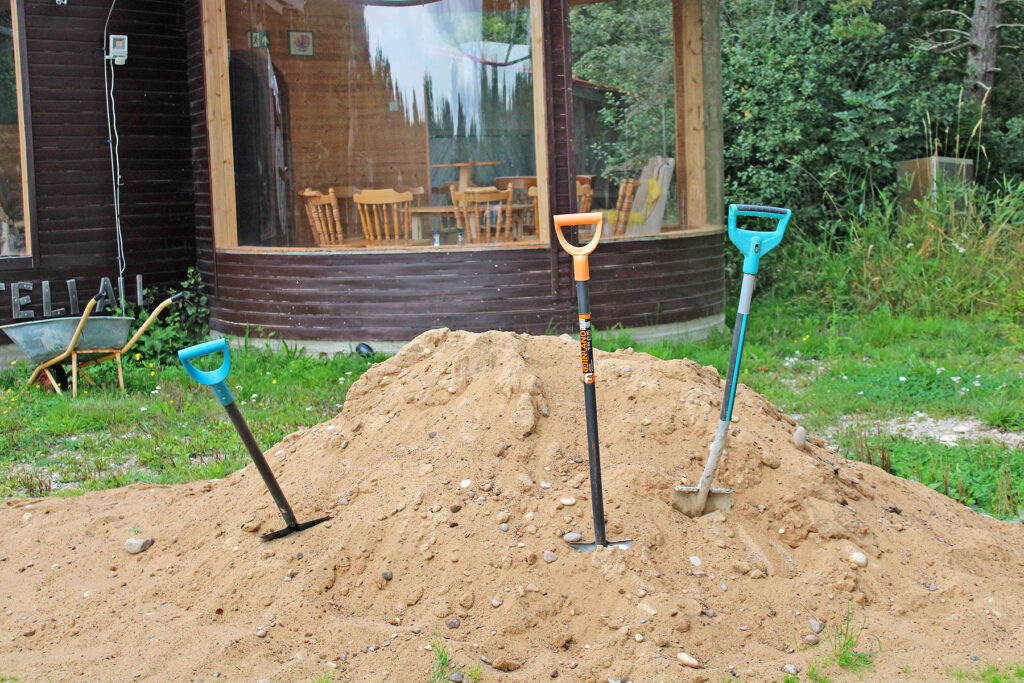
According to Atlas Obscura, Jaan is an old hand at making towers. He made his first in 1978 and simply repeated the process a few times until he settled on making the replica of the Eiffel Tower in 2007, which is still standing today in the middle of his backyard. The island government had tried to take the tower down several times but eventually in 2012, Jaan was successful in applying for a permit for it even though the tower is probably, definitely, not really safe to the point that it now has a locked gate making sure it is simply idolized instead of ascended.
However, Jaan wasn’t resting on his laurels of having one large monument in his yard. Since 2007 he’s continued building and creating and now his backyard is a veritable adventure park complete with water slides, haunted houses, mascots, and copies of even more famous things.
As stated in the article above, Jaan himself doesn’t understand why his little park is so interesting to visitors or why people would travel to a remote corner of a remote island in a remote country just to see a giant tower that is a smaller version of an even more famous tower but like most things humans do I do think it’s because “it was there.” So while you won’t find Jaan’s amazing backyard on any tourist list, it does show up on maps which is what made me interested. Looking at the area online gave me so little information that I wanted to see it for myself even more.
The island of Hiiumaa is only a 30 minute flight from Tallinn then to reach the park from Kärdla (the capital) it’s 13km which was a 15 minute bus ride on a bus that only comes a few times a day.
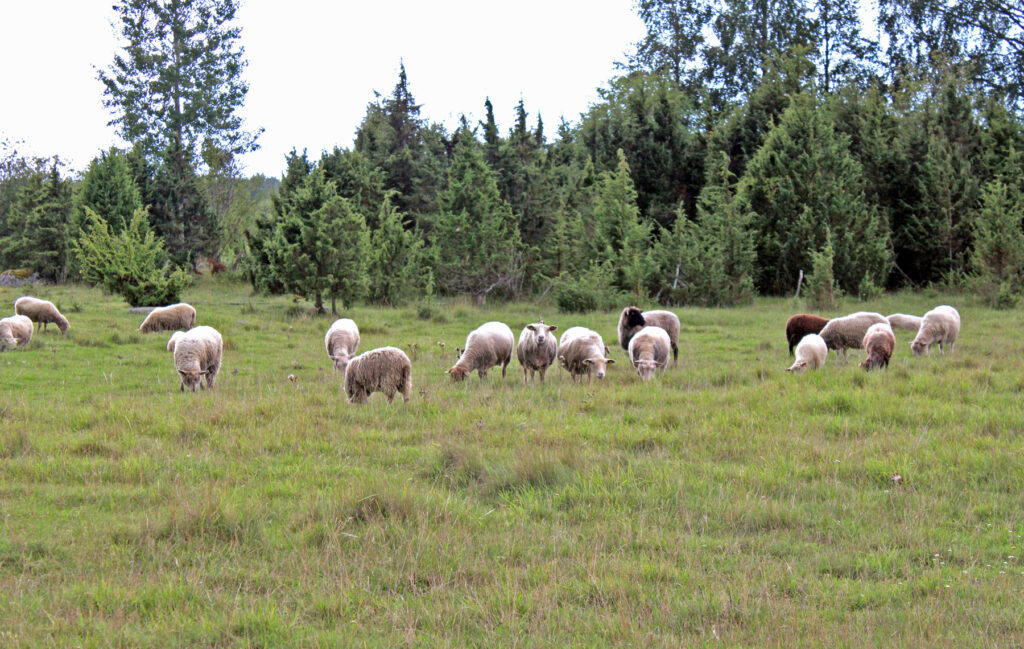
When I got off the bus I saw a large empty field, a stone bus stop structure, a large empty field, and not much else. You can almost see some houses down the road, like a mirage, but at least there was a strange sign pointing to the seikluspark at the roads intersection. It’s impossible to miss because frankly there isn’t much around. The walk down the street was pretty nerve wracking because it’s just 30 minutes down a single lane road lined sparsely with farms. There were sheep, tractors, and a little stand at the side of the road advertising honey for sale. After a certain point the road had a light fork to the left onto something that was more dirt than road. Filled up on both sides, at least in the summer, by blackberry bushes and large wild trees. After 5 minutes I was faced with another choice of left or right and there wasn’t a sign this time so I picked right (the correct direction) and then the road got narrower still, bushes pushing in from all sides where they’d been kept at bay before. The road twisted, narrowed, and grew thinner and muddier and less road-like with each step and when all hope was lost I suddenly saw a break in the trees. A tower peeking through. A giant tower.

At the front were some statues, a police car, an outdoor toilet. I couldn’t say these things were themed in any manner that you would talk about a theme park as being themed but I’ve come to think of this style more like being “outfitted” or “dressed.” From the front I felt a kind of sick apprehension. I’d looked at the pictures online but I worried I’d just burned half my day trekking out to the middle of nowhere. The parking lot was big enough to accommodate at least 10 cars at a time but when I went there wasn’t a single one. In fact in the entire nearly three hours I spent in the park not a single other person came. Just me wandering someone’s front yard on an island off the coast of one of the world’s least populated countries. Alone.




At this point there were all manners of signs telling you to kindly step right into the park. The entrance was flanked by a large dog sitting in front of a sign explaining he was their second dog was also extremely friendly. A cat passed by and similarly seemed disposed to peace so I pressed on.
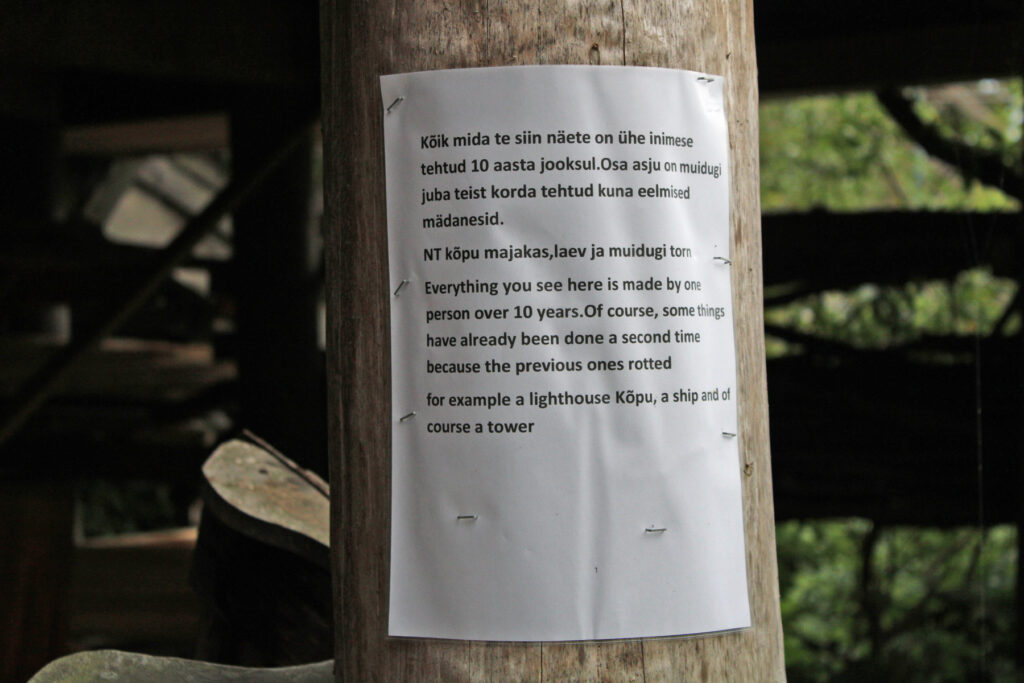

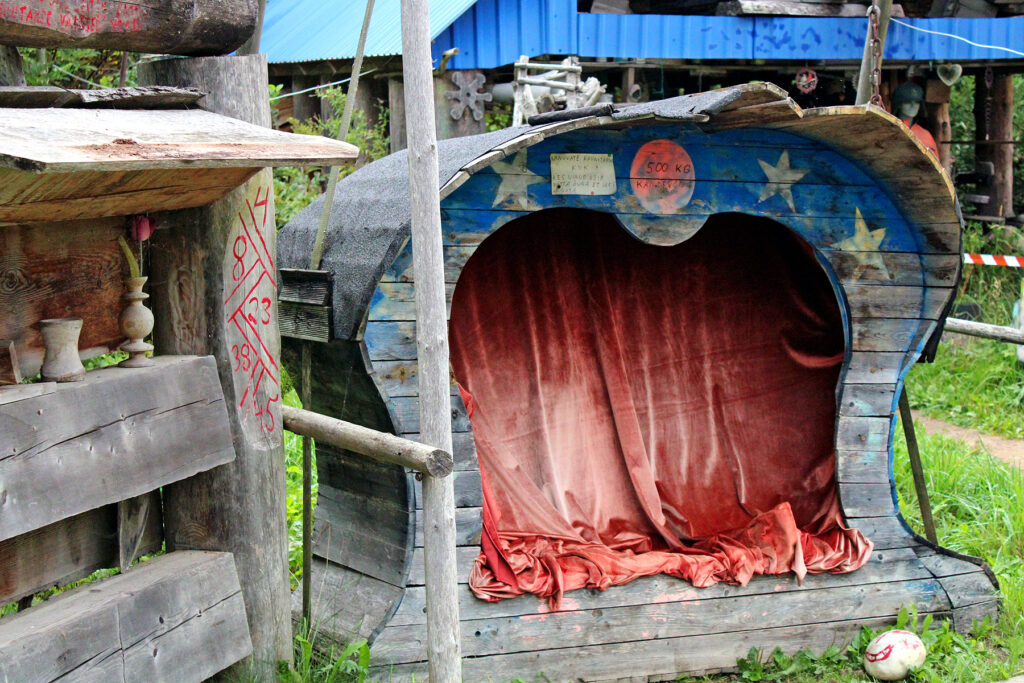

The front structure is likely a house though the part facing the outside seemed to be a cafe and a guest shop of sorts but it’s entirely possible that the people who live here live behind the “park” area. The “gate” when you walk up tells you that admission is 2€ but to pay this there is a simply an open box to place coins in and the gate itself was some pieces of plastic rigged up with a spring. I dutifully finished my coins out of my pocket and slid them into the box feeling a bit like I was paying Charon to cross the River Styx. Wading into the depths of the underworld (or just the unknown).
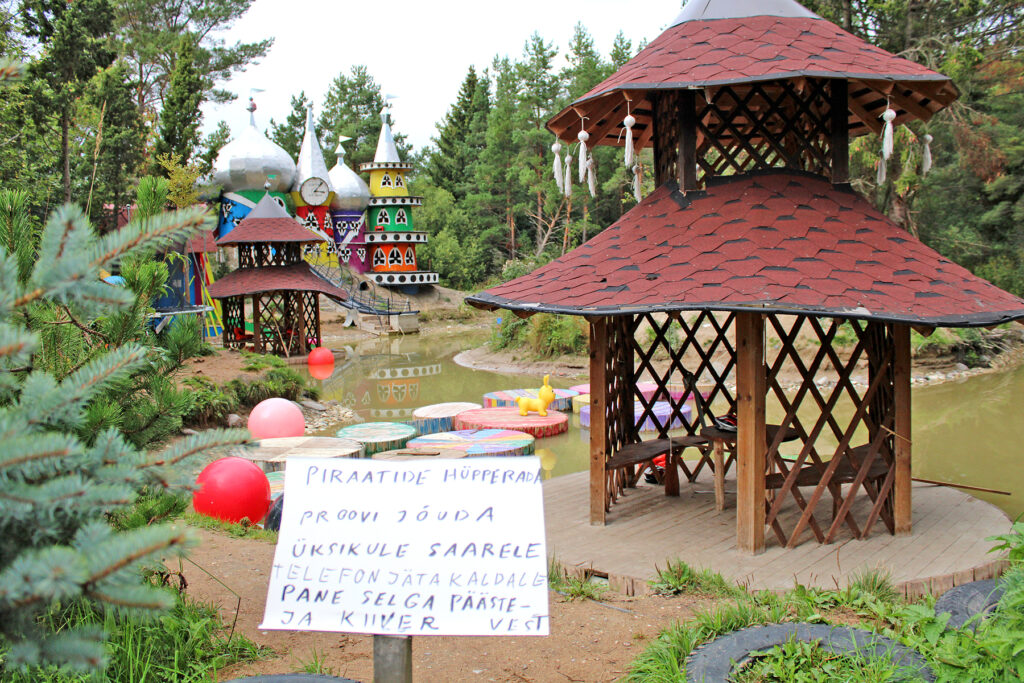
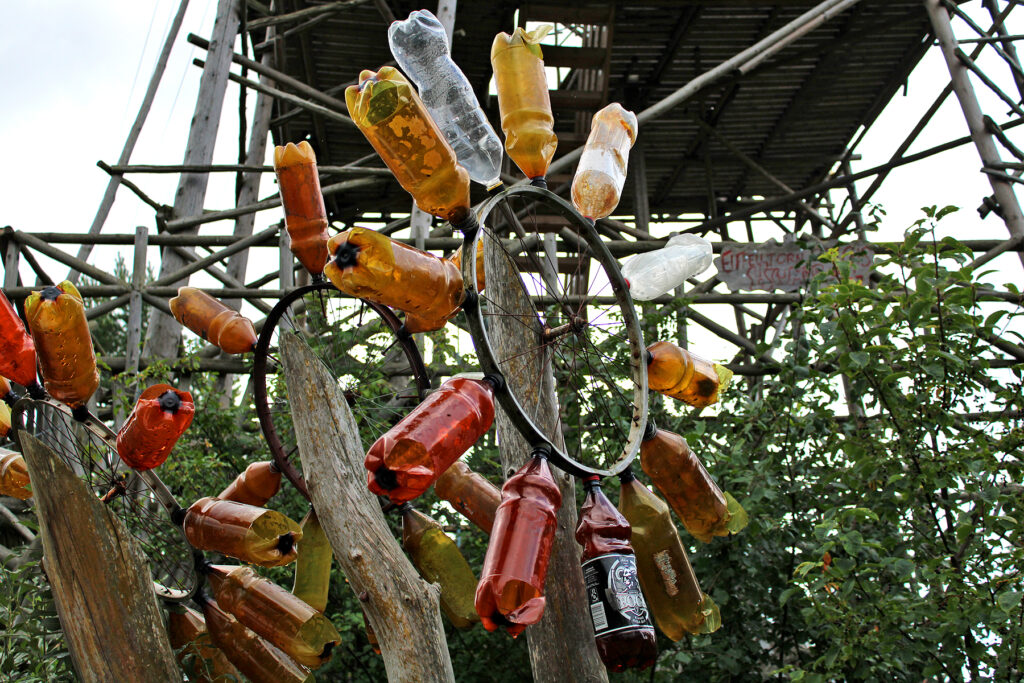
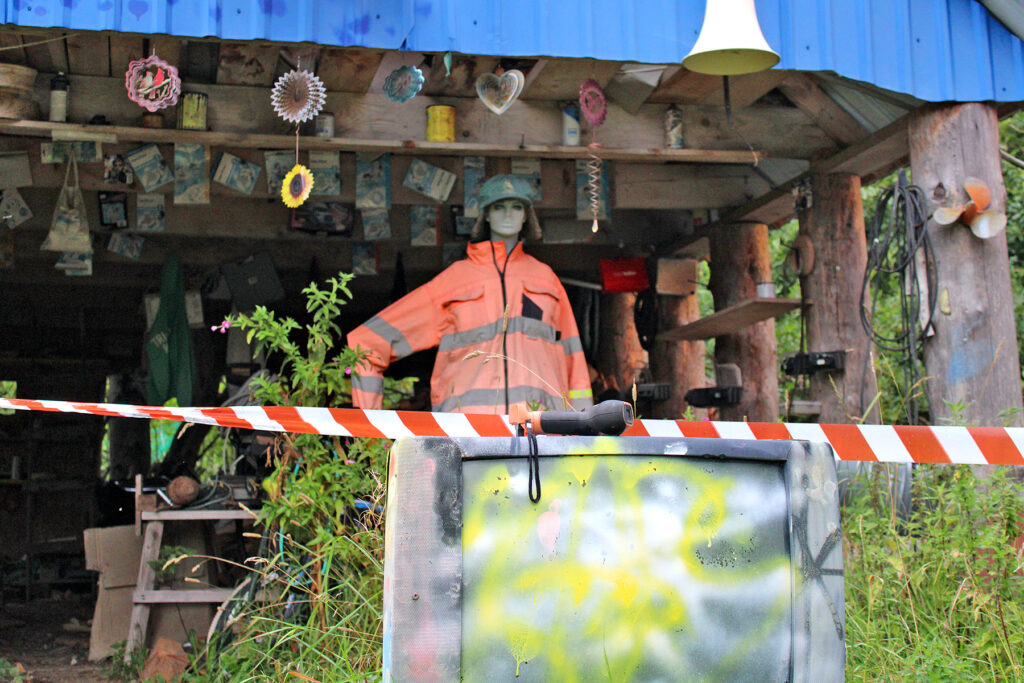
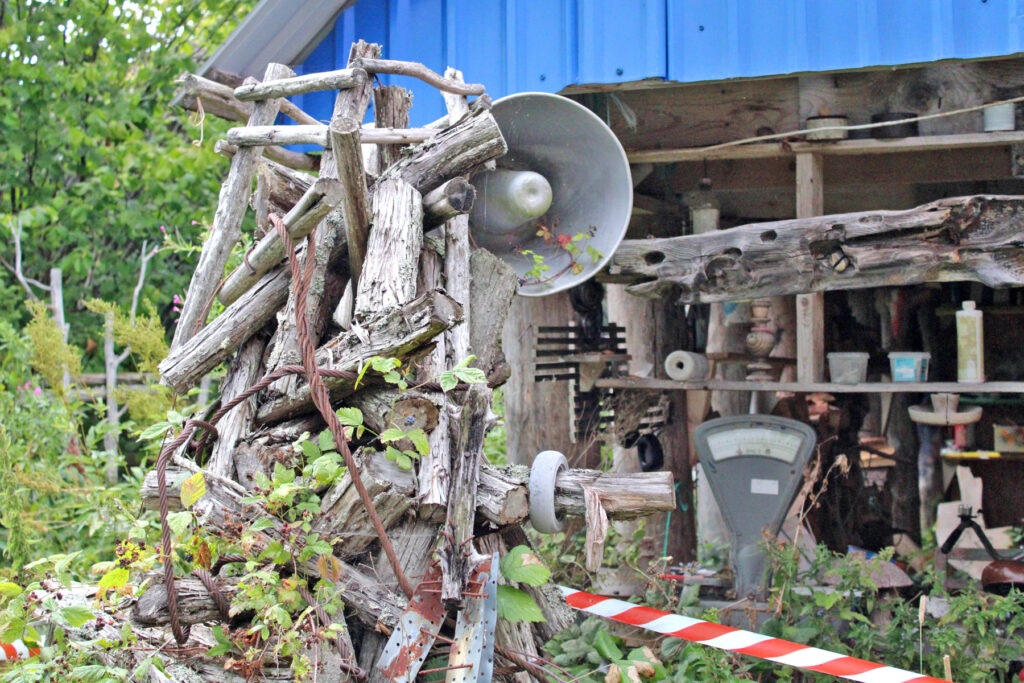
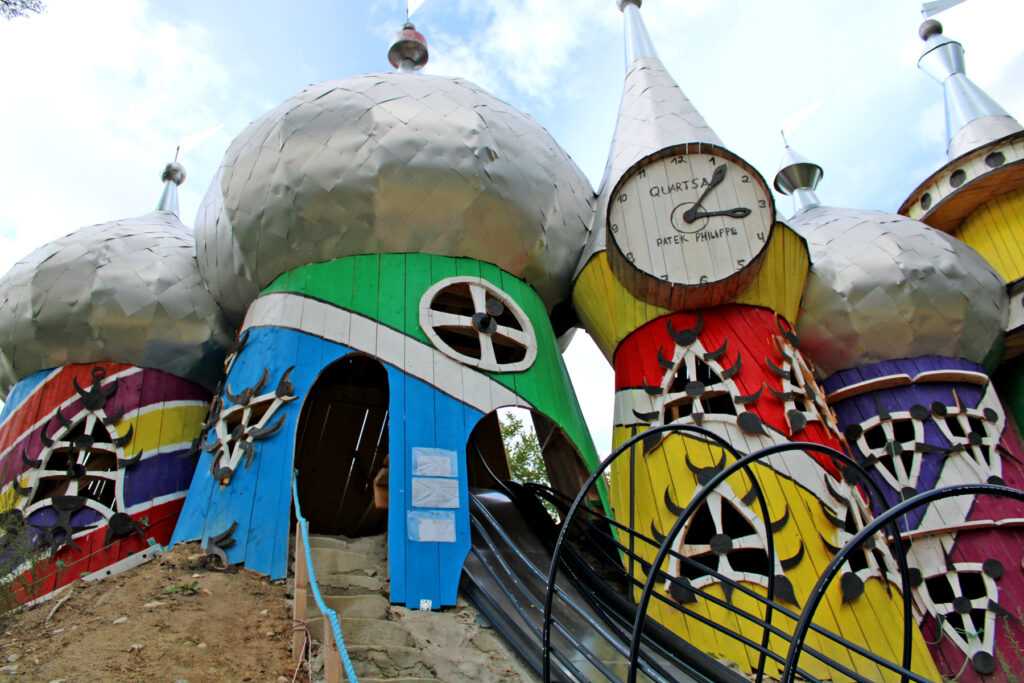
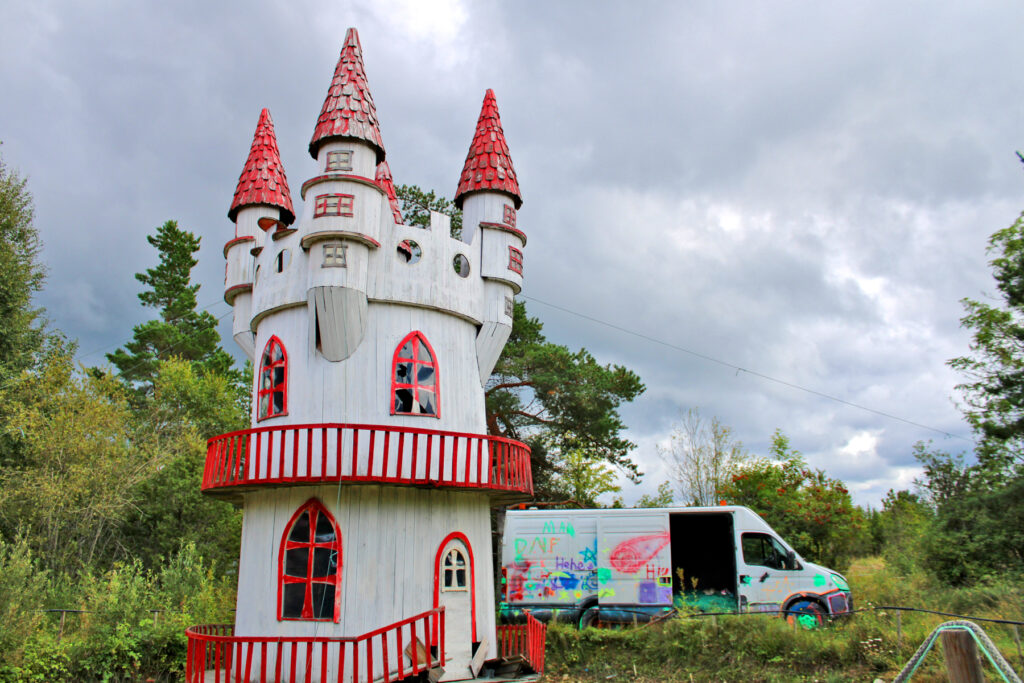
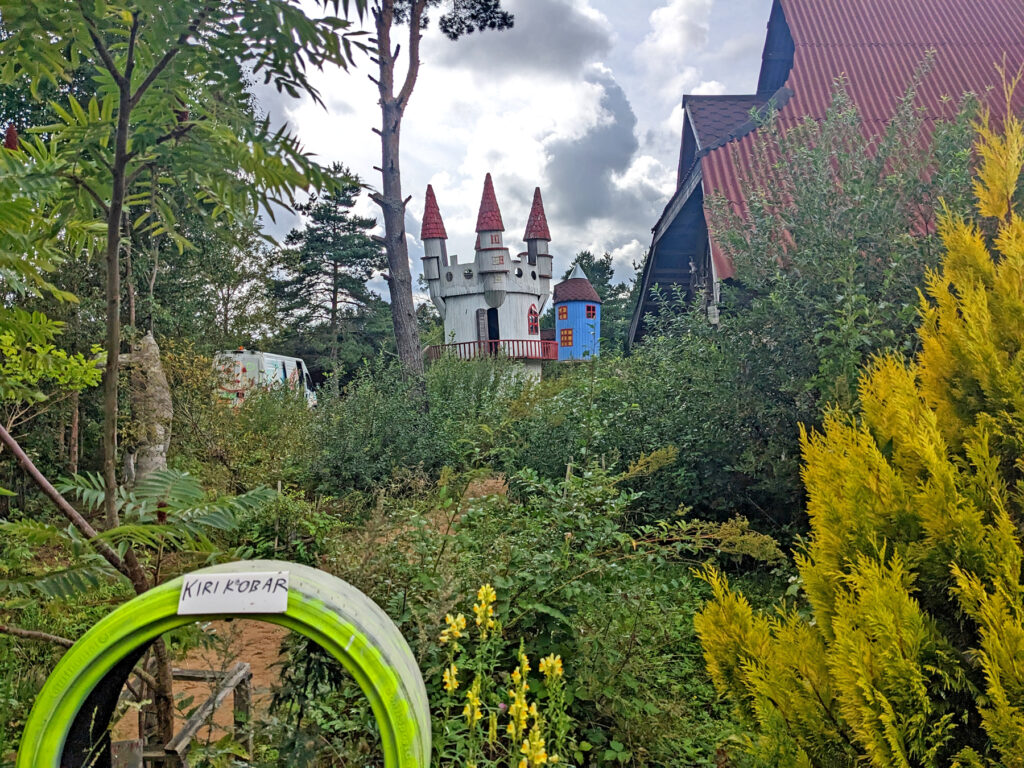

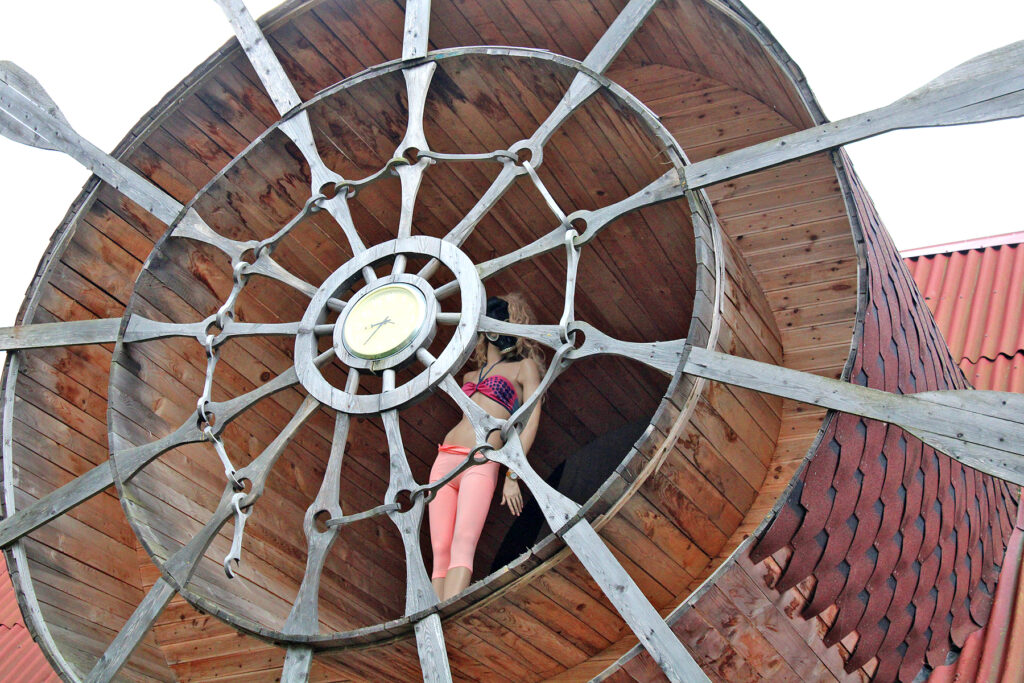
What became apparent to me immediately that my worries over mundanity were completely unfounded. Immediately my senses were assaulted by too many things at the same time. To the left a giant house full of power tools and portions of cars, to the right a giant lake with life vests thrown on the shores for those brave enough to wade into the murky deep hole with a Latvian flag on top. There was a castle, a slide, a clockwork looking building, ladders, see saws, objects made from wood and metal that were half-done or half-undone. Also mannequins. At least 20 of them. I nearly screamed every time I saw one.
In the center of it all, the “Eiffel Tower” a grand psuedo recreation of the tower in France. This tower just 1/10th of the size of the original, it’s wood bending and cracking at its joined points on the beams. The color shifting from deep grey to middling brown depending on age and weathering of each area. A square staircase running a zig zag split through the middle of it.

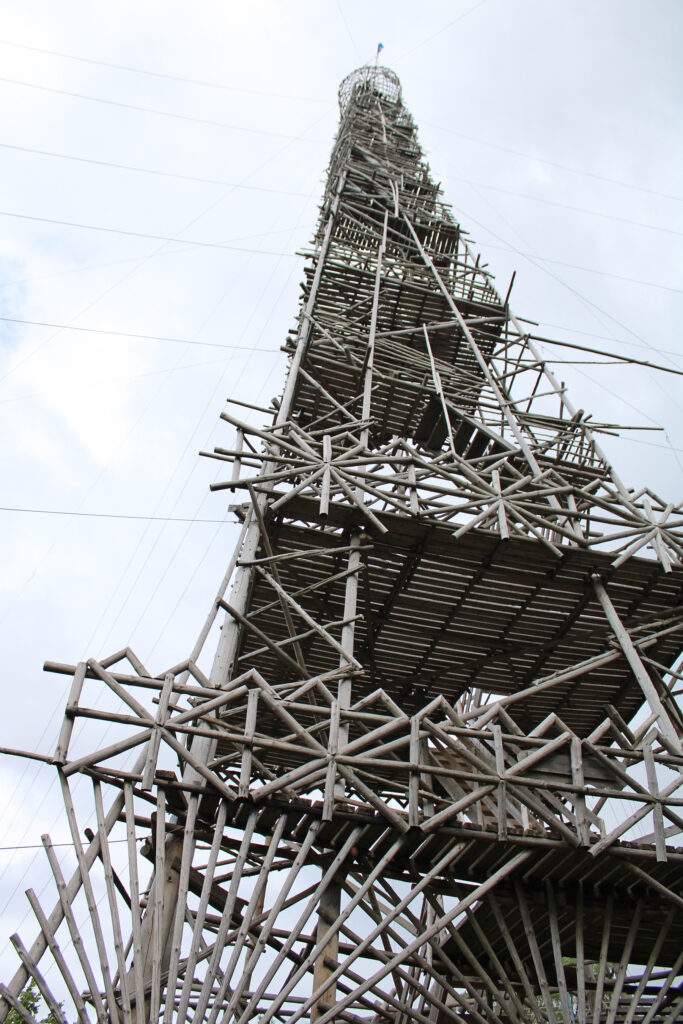


All this after I had taken only five steps into the park. There was nowhere to look and nowhere not to look. Trying to catalogue or classify all the things around me was nearly impossible and I realized there was a path on the floor leading all over the property to parts I couldn’t even imagine or see.
There were easily over 40 “attractions” of some type or another. I wish I had keep a list but it feels futile now because I imagine they are always changing and growing. While I was there though, there was a rocket ship, a storybook house, a ball pit, a pirate cove. Many almost-houses clearly unfit for human inhabitants. Signs, sculptures, chairs, power tools, old silverware, radios, stuffed animals, and even pipes. Most things were made primarily of wood but you could find things laden with metal, cement, reused objects, fabric, plastic and other unidentifiable materials filling in gaps. The floor and walkways also cobbled together right under you. Made of dirt, grass, broken down tree, bricks, wood, and poured cement.
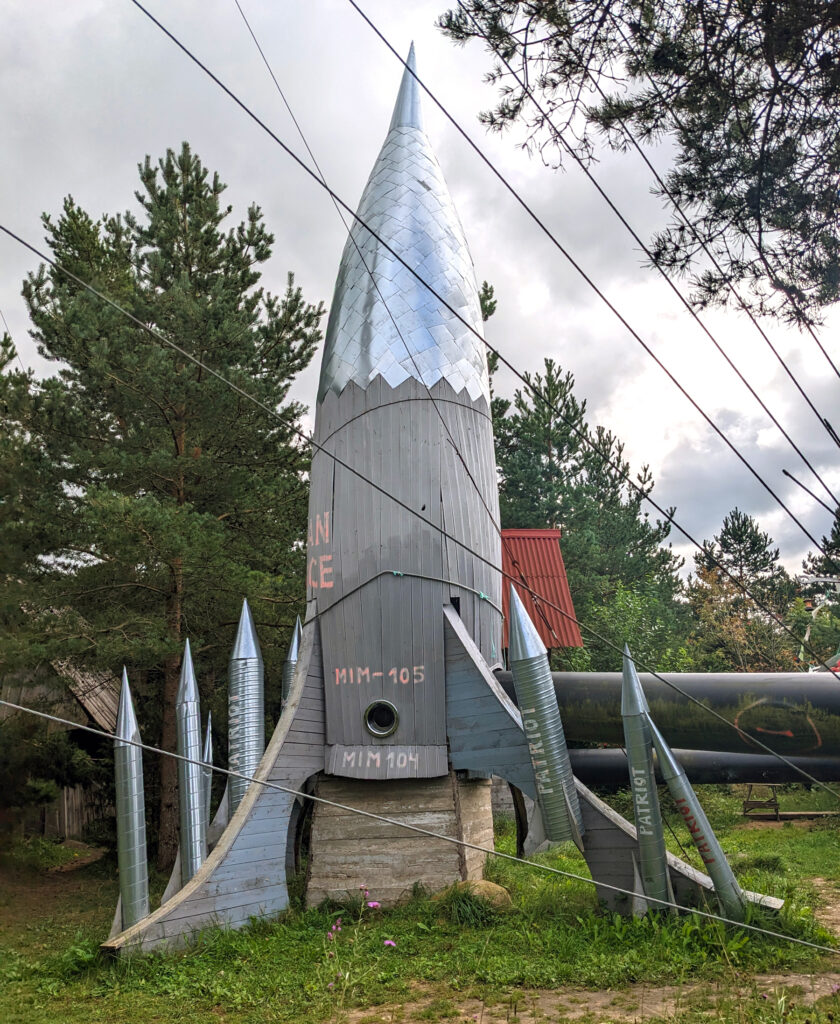
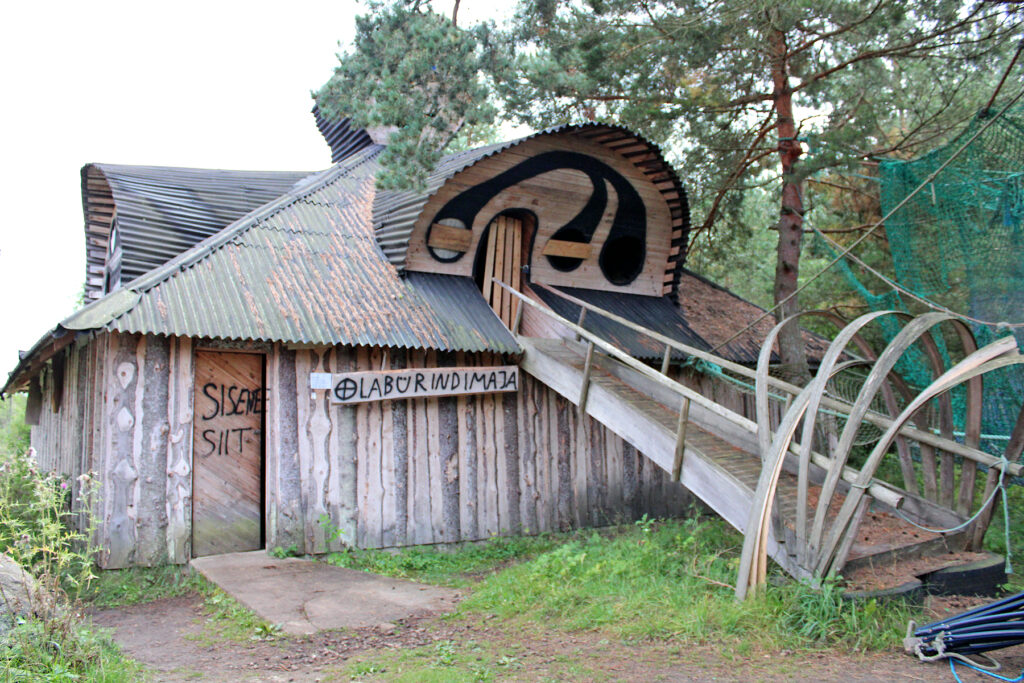

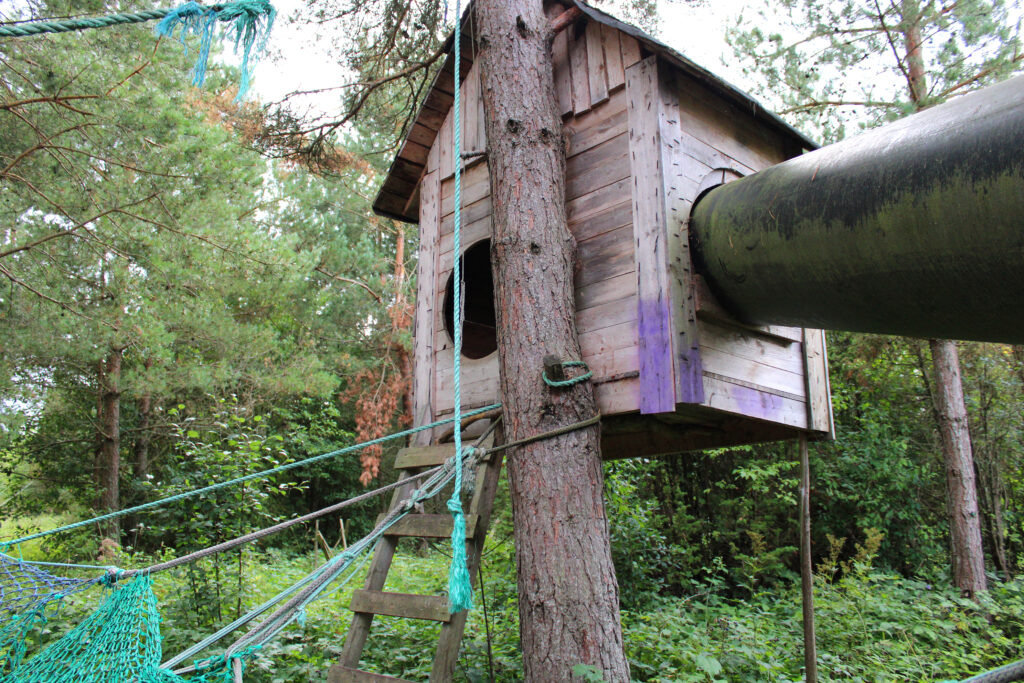
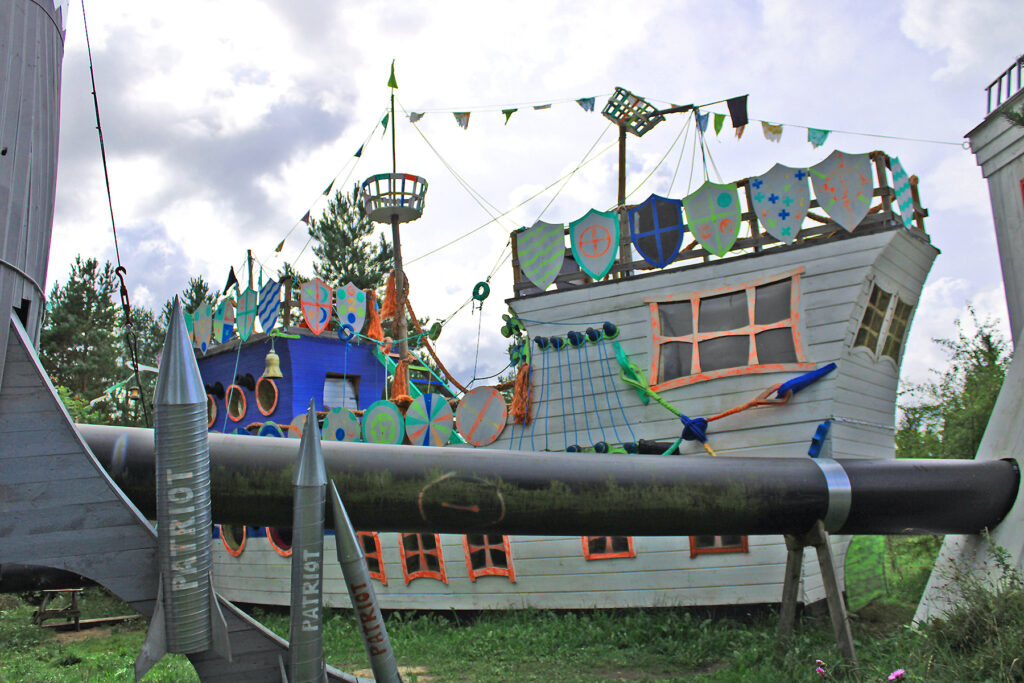
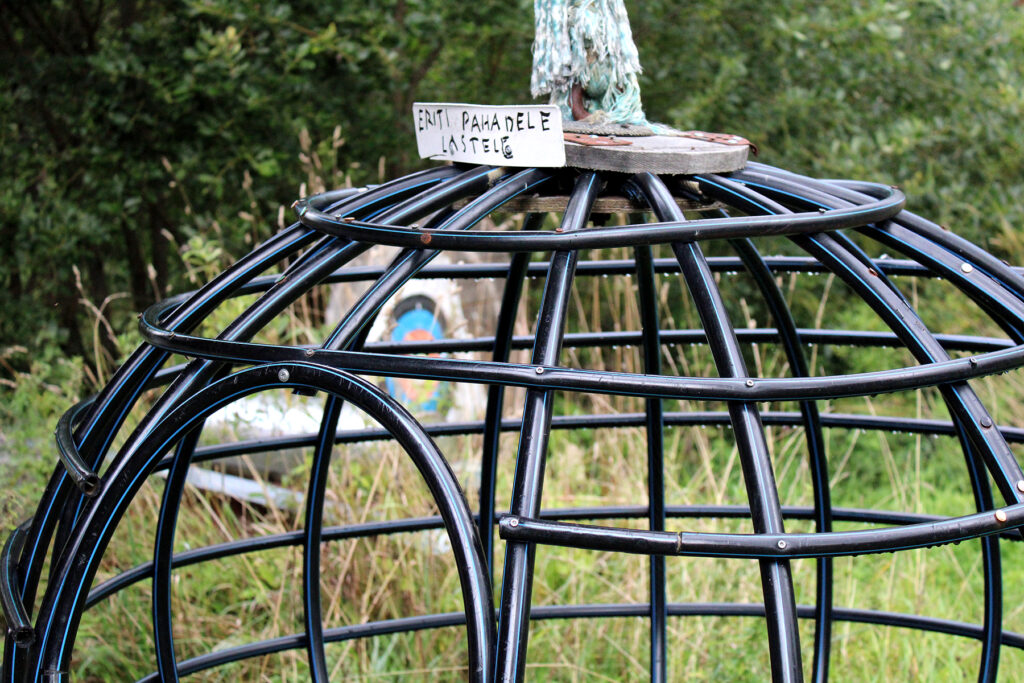
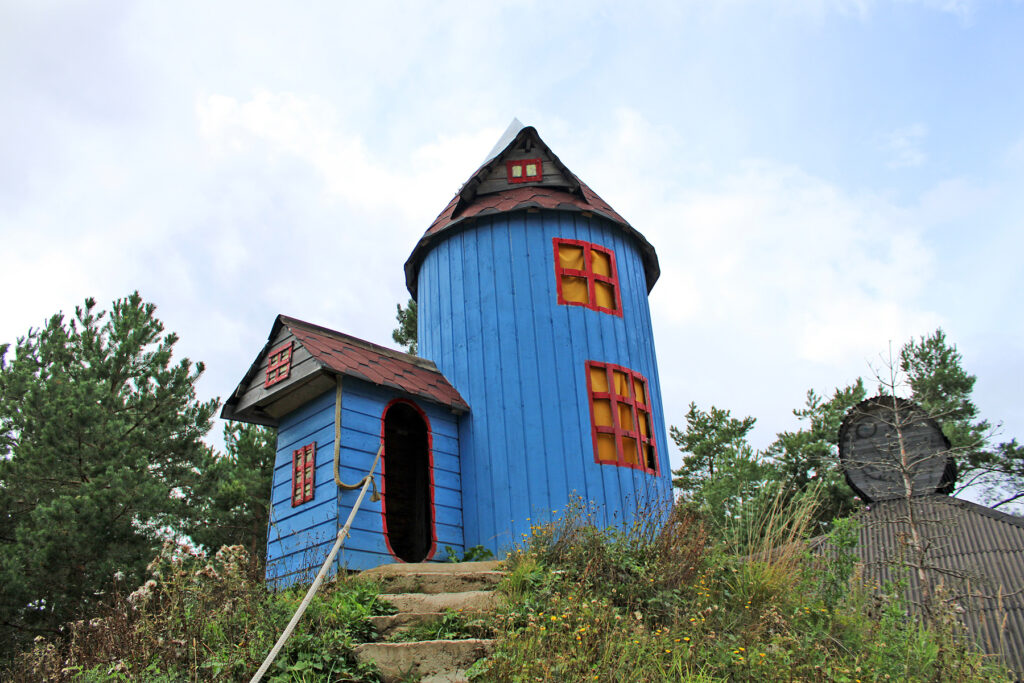

Walking around you get the sensation very quickly that this whole place has been so many other things over it’s very many years. Not just because there is a plaque on the tower tells you it was once ripped down and rebuilt or the sign at the front which says some things had rotten through but also you can simply see, with your eyes, time taking an immense toll of these objects.
There doesn’t seem to be, at least not in any meaningful way to me, a rhyme or reason for why these objects were built. Why they’re built in the specific location they are, why they exist at all. It is a material lesson that you can just choose to wake up one morning and do a near infinite amount of things. Or at least it felt like this man just woke up one morning and decided he was going to build something and he kept doing it until he didn’t want to because make no mistake, he built everything in that park himself.
I don’t know what was in Jaan’s heart and mind because I didn’t actually realize he was there until I left. I only caught a glimpse of him, reading a book in a corner of the “gift shop” on my way out but I needed to get back to the bus stop at a specific time so I couldn’t stop to chat. But if I had to guess, I imagine what drives a person to do all of this is just the love of it. The love of building or making even just “having a project.” Whatever causes this though struck me around 30 minutes into my aimlessly wandering between buildings that encouraged me to do frankly dangerous things at my own risk, that this is way cooler than writing a novel.
I’ve often heard it said that every person has a novel inside of themselves. I believe this because it turns out I have at least seven of them which were once inside of me and unfortunately now exist, also, outside of me. I wouldn’t say they’re good, most of them are honestly quite bad but when you’re starring at 30 meter tall replica of the Eiffel Tower on a remote island in the global North suddenly it feels like writing a novel is the easy path to self expression. That if I had it in me to build a tower, if the urge to build a tower and thwart god lived in all of us, we’d probably have more hazardous towers. Heaven knows nothing stopped me from writing bad art and the law didn’t stop Jaan from building his.
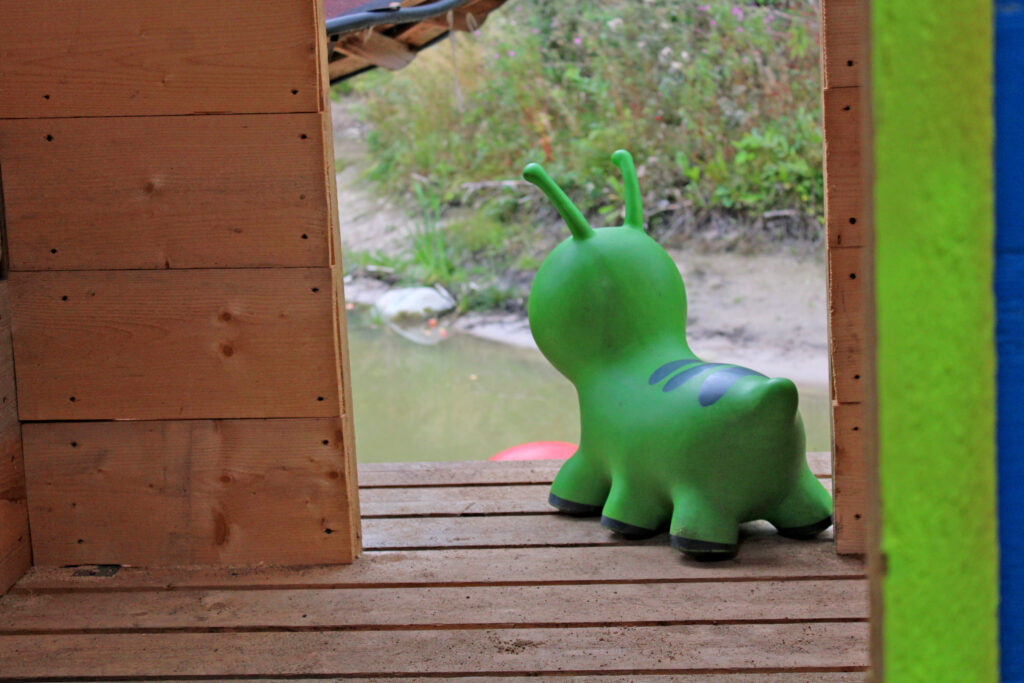


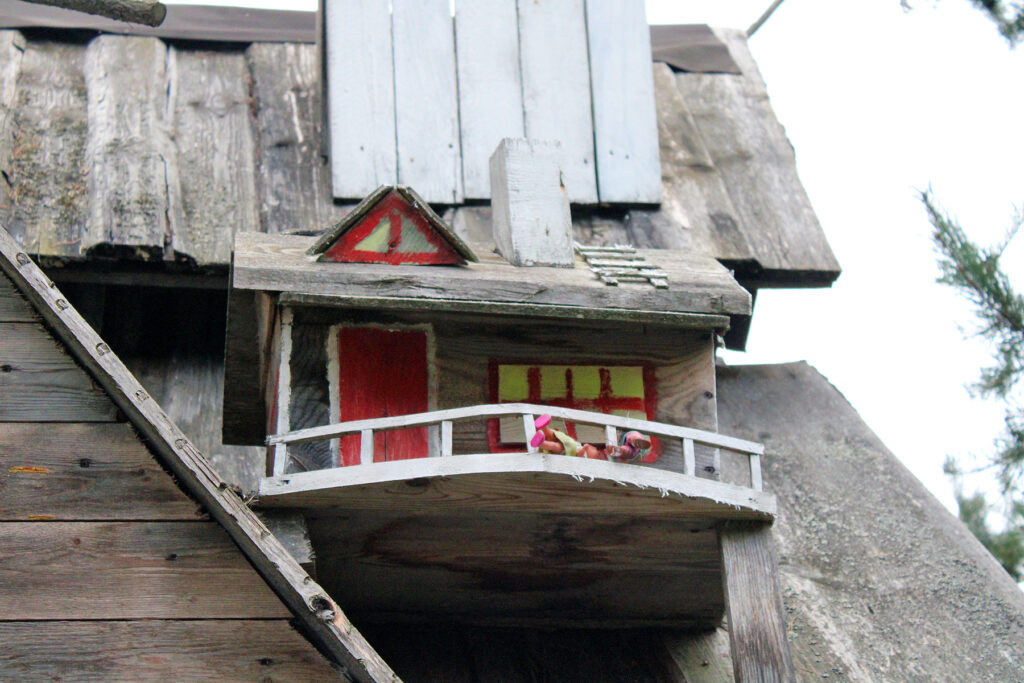
It feels somehow cruel to call something naive art, as if you’re discounting the person who created it as a void of skills and understanding but that’s what a place like this feels like. It is a valley in direct opposition to the art park in Zürich or an argument again the large scale desert monuments (or even regular monuments) that people have built in service, in thanks, in memory to. What is all this for? Looking at the pictures on Google people do play on these objects, in the water, running up the slides. At some point people went up into the tower that eventually almost got the whole project condemned for being a hazard and an eyesore.
In theory this park was built for adventure, for fun. I could not see it as anything other than art which made me feel small and afraid.
The art park in Zürich had rough edges and an air of “dangerous at your own regard” toward most objects but also things had been sitting there for 20 or more years. They had been built thoughtfully out of materials that considered the strength of someone walking on them and had been poured assuming they needed to stay steady, or to bend, or to stretch over time. Most of all they were being maintained and cared for, however minimally, by someone. By someones even. Instead everything in the Seikluspark is made inflexible, thin with age, haphazardly nailed to the ground or sometimes simply coming out of the ground at its seams. There’s too many objects for one man to control, a hundred plates spinning and crashing. There were nails, staples, boards of wood, spilled over concrete, nets, and even dozens of daisy chained power strips lining the “walkways” which were little more than dirt cleanings where trees and bushes threaten to gobble up objects, paths, people, all within a mere season or two of growth. The signs were bent old plywood and ancient shipping palettes with uneven lettering made at the end of a wide, broken bristle brush.
Aside from this I still felt looking at this park that I had somehow, wasted my whole life. If Atlas Obscura is to be believed 30,000 people visit this place every year. I’m not sure if the pandemic has diminished the amount of visitors but considering what a small country Estonia is and how I’d never heard of a single person visiting this thing I do have to doubt their numbers (it’s not even listed on a website for Hiiumaa after all) but people do visit. At least in the 100s, if not 30,000.
And while I have yet to publish a book, if I did that book might reach 100 people if I were very lucky. Someone could simply pick that book up from a library or buy it online. They wouldn’t have to fly to the remote corners of Europe only to get more remote and more remote until they found themselves in a forest breaking through the trees to see nonsense. To be able to reach people because you made something real is already surreal but that you built something in this world that people can come to and can touch it and can play in it is so phenomenally beyond my experience that I pretty much spent my entire day standing around in awe.
I know this place won’t last forever. Nothing ever does of course but this place has already (as reported to me by sign) had a couple of these installations fall apart and be rebuilt. If my math is correct, Jaan is now around 60 years old. If it was him I saw on the way out he had a big white bushy beard and he looked his year. Even if he keeps fixing and building this place will probably only last as long as him, maybe another 10-20 years (life expectancy for men in Estonia is 72). Since it’s mostly made of wood, it might take a surprisingly small amount of time for it to collapse into the Earth and leave very little trace. Those trees and bushes I walked through eating their way through the rockets and the palaces in a matter of years, not even decades. So much of the modern world seems so permanent these days because it feels like it is just undecaying chunks of plastic and concrete, but Seikluspark is much closer to a thing made at the scale of a human that will last only the length of a human as well.
Maybe to someone else, someone with more of an understanding of how things are made this place might be less impressive but to me it seems impossible. I suppose in the end I didn’t use the park correctly, I didn’t play or touch almost anything in the park. You wouldn’t have to hang a single sign to convince me these objects were dangerous to walk on, to play on, to touch occasionally, but maybe if I’d grown up somewhere that was like this place, like those adventure playgrounds they have now I could have taken advantage of this place as what it was supposed to be instead of an intriguing one man outdoor art museum.
I’ll leave you here with this video from Jaan’s YouTube page of him, sitting at the top of his beautiful tower at the edge of the world playing a flute. Beautiful and only a little terrifying.

5 Quick Things: June 2024

5 Quick Things: May 2024
Welcome to 5 Quick Things that I saw since last month that I thought were interesting enough to share with you. None of them are particularly timely so feel free to just enjoy 🙂
Continue reading 5 Quick Things: May 2024
5 Quick Things: April 2024
Welcome to 5 Quick Things that I saw since last month that I thought were interesting enough to share with you. None of them are particularly timely so feel free to just enjoy 🙂
Continue reading 5 Quick Things: April 2024
5 Quick Things: March 2024
Welcome to 5 Quick Things that I saw since last month that I thought were interesting enough to share with you. None of them are particularly timely so feel free to just enjoy 🙂
Continue reading 5 Quick Things: March 2024
5 Quick Things: February 2024
Welcome to 5 Quick Things that I saw since last month that I thought were interesting enough to share with you. None of them are particularly timely so feel free to just enjoy 🙂
Continue reading 5 Quick Things: February 2024
5 Quick Things: January 2024

5 Quick Things: December 2023
Welcome to 5 Quick Things that I saw since last month that I thought were interesting enough to share with you. None of them are particularly timely so feel free to just enjoy 🙂
Continue reading 5 Quick Things: December 2023